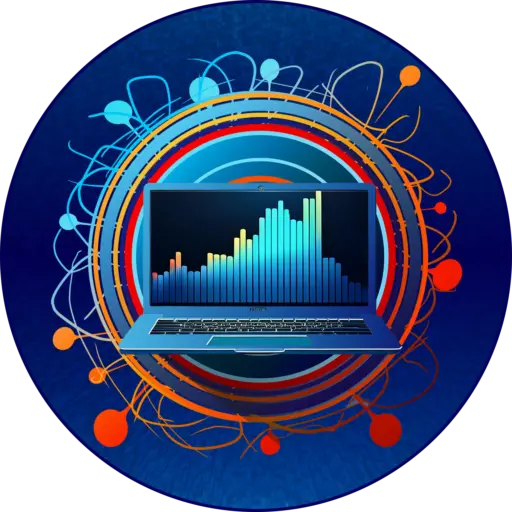
OSI vs. TCP/IP Models

Understanding OSI vs. TCP/IP models is fundamental to managing and troubleshooting modern networks. These models guide how data moves across networks, ensuring effective communication between devices. The OSI model (Open Systems Interconnection) is a theoretical framework, while the TCP/IP model (Transmission Control Protocol/Internet Protocol) is a practical standard used in real-world networking. This guide will explore both models, their differences, and their importance in networking.
What Are Network Models?
Network models provide a structured approach to data transmission, ensuring devices and systems communicate efficiently. They define layers responsible for different networking tasks. The two most common models are:
- OSI Model – A seven-layer conceptual framework that standardizes networking protocols and troubleshooting.
- TCP/IP Model – A four-layer practical framework that forms the foundation of modern internet communication.
Network models help IT professionals diagnose and resolve issues, optimize system performance, and develop secure network architectures. Understanding the OSI vs. TCP/IP models is particularly important for professionals preparing for certifications such as CompTIA Network+ and Cisco CCNA.
Learn more from Network Encyclopedia.
OSI Model: The Seven-Layer Approach
The OSI model consists of seven layers, each with a distinct role in networking:
- Physical Layer – Handles raw data transmission over physical media like cables, fiber optics, and wireless signals.
- Data Link Layer – Manages MAC addresses, frames, and error detection to ensure local communication.
- Network Layer – Routes data between networks using IP addresses, ensuring end-to-end delivery.
- Transport Layer – Ensures reliable (TCP) or best-effort (UDP) data delivery through segmentation and reassembly.
- Session Layer – Maintains and controls communication sessions between applications on different devices.
- Presentation Layer – Formats, encrypts, and compresses data to ensure compatibility across systems.
- Application Layer – Interfaces with software applications like HTTP, FTP, and SMTP, providing user-level services.
Each layer in the OSI model plays a crucial role in maintaining seamless communication and troubleshooting. Network engineers and administrators frequently reference this model when diagnosing connectivity issues.
For more details, visit IBM’s OSI Model Guide.
TCP/IP Model: The Practical Framework
The TCP/IP model simplifies networking into four layers, making it more aligned with real-world network communication:
- Network Interface Layer – Manages hardware-based communication, combining OSI’s physical and data link layers.
- Internet Layer – Handles IP addressing, routing, and packet forwarding, ensuring data reaches its destination.
- Transport Layer – Manages end-to-end communication using TCP for reliability or UDP for speed-sensitive transmissions.
- Application Layer – Provides network services like HTTP, FTP, and DNS, integrating functions from multiple OSI layers.
The TCP/IP model is the backbone of modern networks, supporting everything from web browsing to cloud computing and email communication. Unlike the OSI model, TCP/IP is widely implemented in real-world networking environments.
For an in-depth breakdown, check out Cisco’s TCP/IP Model Overview.
Key Differences Between OSI and TCP/IP
While both models define network communication, OSI vs. TCP/IP models differ significantly:
- Layer Count: The OSI model has seven layers, while the TCP/IP model has four layers, combining similar functions.
- Usage: The OSI model is a theoretical framework, while TCP/IP is the practical standard used in live networks.
- Protocol Integration: The TCP/IP model includes essential internet protocols within its layers, unlike OSI, which separates conceptual and implementation aspects.
- Flexibility: TCP/IP is better suited for large-scale networking, such as the internet, whereas OSI is primarily used for learning and troubleshooting.
These distinctions make TCP/IP the dominant model in networking today, with OSI being used more for educational and diagnostic purposes.
Read CompTIA’s OSI vs. TCP/IP Comparison for additional insights.
Why Understanding OSI vs. TCP/IP Models Matters
A strong understanding of these models benefits IT professionals in several ways:
- Troubleshooting: Helps pinpoint where network failures occur, allowing for more effective debugging.
- Performance Optimization: Assists in selecting and configuring the best protocols for efficient communication.
- Security Implementation: Enhances cybersecurity by identifying vulnerabilities at different layers, improving firewall and encryption policies.
These models are widely used in network administration, cybersecurity, and cloud computing, making them essential knowledge for anyone managing or securing modern networks.
For more on networking principles, visit Microsoft’s Networking Basics.
Final Thoughts
Both the OSI and TCP/IP models are crucial for understanding how networks operate. The OSI model offers a structured conceptual framework, while the TCP/IP model is the real-world standard for internet-based communication. Mastering these models enhances networking expertise, making troubleshooting, configuration, and security implementation easier.
For additional study materials, check out:
